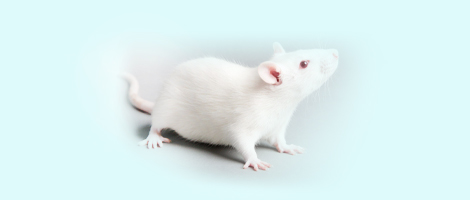| 1 |
KHAN I, ULLAH N, ZHA L J, et al. Alteration of gut microbiota in inflammatory bowel disease (IBD): cause or consequence? IBD treatment targeting the gut microbiome[J]. Pathogens, 2019, 8(3):126. DOI: 10.3390/pathogens8030126 .
|
| 2 |
GEARRY R B. IBD and environment: are there differences between east and west[J]. Dig Dis, 2016, 34(1-2):84-89. DOI: 10.1159/000442933 .
|
| 3 |
OTT S J, MUSFELDT M, WENDEROTH D F, et al. Reduction in diversity of the colonic mucosa associated bacterial microflora in patients with active inflammatory bowel disease[J]. Gut, 2004, 53(5):685-693. DOI: 10.1136/gut.2003.025403 .
|
| 4 |
BETTENWORTH D, RIEDER F. Pathogenesis of intestinal fibrosis in inflammatory bowel disease and perspectives for therapeutic implication[J]. Dig Dis, 2017, 35(1-2):25-31. DOI: 10.1159/000449079 .
|
| 5 |
FOX J G, GE Z, WHARY M T, et al. Helicobacter hepaticus infection in mice: models for understanding lower bowel inflammation and cancer[J]. Mucosal Immunol, 2011, 4(1):22-30. DOI: 10.1038/mi.2010.61 .
|
| 6 |
NAGALINGAM N A, ROBINSON C J, BERGIN I L, et al. The effects of intestinal microbial community structure on disease manifestation in IL-10-/- mice infected with Helicobacter hepaticus[J]. Microbiome, 2013, 1(1):15. DOI: 10.1186/2049-2618-1-15 .
|
| 7 |
LU Y Y, CHEN Y E, LI Y H, et al. Monotropein inhibits colitis associated cancer through VDR/JAK1/STAT1 regulation of macrophage polarization[J]. Int Immunopharmacol, 2023, 124(Pt A):110838. DOI: 10.1016/j.intimp.2023.110838 .
|
| 8 |
ASSA A, VONG L, PINNELL L J, et al. Vitamin D deficiency promotes epithelial barrier dysfunction and intestinal inflammation[J]. J Infect Dis, 2014, 210(8):1296-1305. DOI: 10.1093/infdis/jiu235 .
|
| 9 |
CHETCUTI ZAMMIT S, ELLUL P, GIRARDIN G, et al. Vitamin D deficiency in a European inflammatory bowel disease inception cohort: an epi-IBD study[J]. Eur J Gastroenterol Hepatol, 2018, 30(11):1297-1303. DOI: 10.1097/MEG. 0000000000001238 .
|
| 10 |
钱淼, 冯洁, 张泉, 等. 螺杆菌属LAMP快速检测方法的研究[J]. 扬州大学学报(农业与生命科学版), 2020,41(4):77-81. DOI:10.16872/j.cnki.1671-4652.2020.04.013 .
|
|
QIAN M, FENG J, ZHANG Q, et al. The study of rapid detection of Helicobacter species using loop-mediated isothermal amplification[J]. J Yangzhou Univ Agric Life Sci Ed, 2020,41(4):77-81. DOI:10.16872/j.cnki.1671-4652.2020.04.013 .
|
| 11 |
WU Y, RAN L, YANG Y, et al. Deferasirox alleviates DSS-induced ulcerative colitis in mice by inhibiting ferroptosis and improving intestinal microbiota[J]. Life Sci, 2023, 314:121312. DOI: 10.1016/j.lfs.2022.121312 .
|
| 12 |
孙靖谕, 谢灵志, 冯洁, 等. 啮齿类螺杆菌SYBR Green Ⅱ荧光定量PCR检测方法的建立[J]. 实验动物与比较医学, 2018, 38(2):91-97. DOI: 10.3969/j.issn.1674-5817.2018.02.003 .
|
|
SUN J Y, XIE L Z, FENG J, et al. Establishment of SYBR green Ⅱ based real-time PCR method for detection of Helicobacter rodentium[J]. Lab Anim Comp Med, 2018, 38(2):91-97. DOI: 10.3969/j.issn.1674-5817.2018.02.003 .
|
| 13 |
WANG R, WANG D J, WANG H W, et al. Therapeutic targeting of Nrf2 signaling by maggot extracts ameliorates inflammation-associated intestinal fibrosis in chronic DSS-induced colitis[J]. Front Immunol, 2021, 12:670159. DOI: 10.3389/fimmu.2021.670159 .
|
| 14 |
ANDOH A, NISHIDA A. Pro- and anti-inflammatory roles of interleukin (IL)-33, IL-36, and IL-38 in inflammatory bowel disease[J]. J Gastroenterol, 2023, 58(2):69-78. DOI: 10.1007/s00535-022-01936-x .
|
| 15 |
XAVIER R J, PODOLSKY D K. Unravelling the pathogenesis of inflammatory bowel disease[J]. Nature, 2007, 448(7152):427-434. DOI: 10.1038/nature06005 .
|
| 16 |
CAHILL R J, FOLTZ C J, FOX J G, et al. Inflammatory bowel disease: an immunity-mediated condition triggered by bacterial infection with Helicobacter hepaticus[J]. Infect Immun, 1997, 65(8):3126-3131. DOI: 10.1128/iai.65.8.3126-3131.1997 .
|
| 17 |
BURICH A, HERSHBERG R, WAGGIE K, et al. Helicobacter-induced inflammatory bowel disease in IL-10- and T cell-deficient mice[J]. Am J Physiol Gastrointest Liver Physiol, 2001, 281(3): G764-G778. DOI: 10.1152/ajpgi.2001.281.3.G764 .
|
| 18 |
BATTISTINI C, BALLAN R, HERKENHOFF M E, et al. Vitamin D modulates intestinal microbiota in inflammatory bowel diseases[J]. Int J Mol Sci, 2020, 22(1):362. DOI: 10.3390/ijms22010362 .
|
| 19 |
DOMAZETOVIC V, IANTOMASI T, BONANOMI A G, et al. Vitamin D regulates claudin-2 and claudin-4 expression in active ulcerative colitis by p-Stat-6 and Smad-7 signaling[J]. Int J Colorectal Dis, 2020, 35(7):1231-1242. DOI: 10.1007/s00384-020-03576-0 .
|
| 20 |
ISMAILOVA A, WHITE J H. Vitamin D, infections and immunity[J]. Rev Endocr Metab Disord, 2022, 23(2):265-277. DOI: 10.1007/s11154-021-09679-5 .
|
| 21 |
SMILLIE C S, BITON M, ORDOVAS-MONTANES J, et al. Intra- and inter-cellular rewiring of the human colon during ulcerative colitis[J]. Cell, 2019, 178(3):714-730.e22. DOI: 10.1016/j.cell.2019.06.029 .
|
| 22 |
KOTSIOU O S, GOURGOULIANIS K I, ZAROGIANNIS S G. IL-33/ST2 axis in organ fibrosis[J]. Front Immunol, 2018, 9:2432. DOI: 10.3389/fimmu.2018.02432 .
|







 ), CAO Shuyang2, ZHOU Zhengyu1(
), CAO Shuyang2, ZHOU Zhengyu1( )(
)( )
)